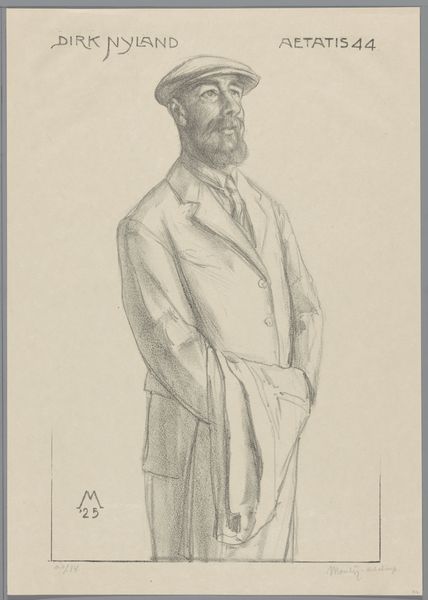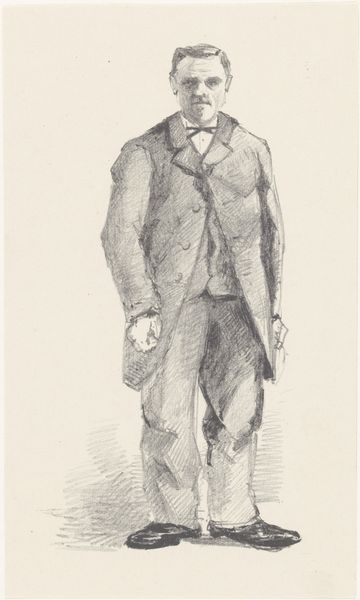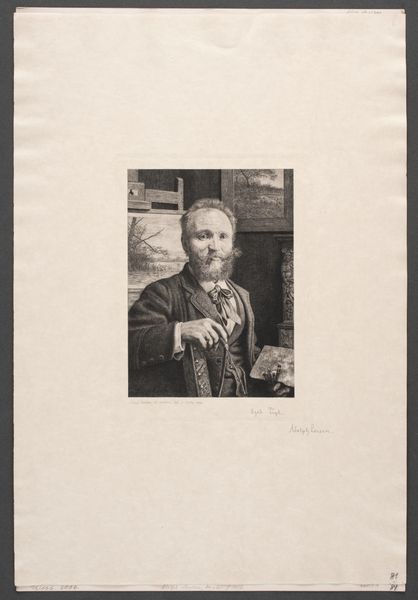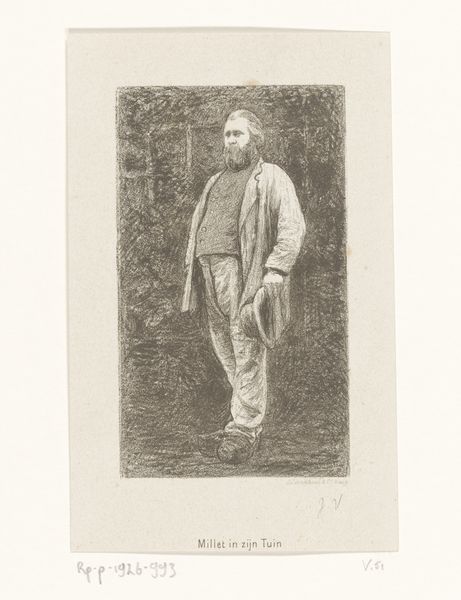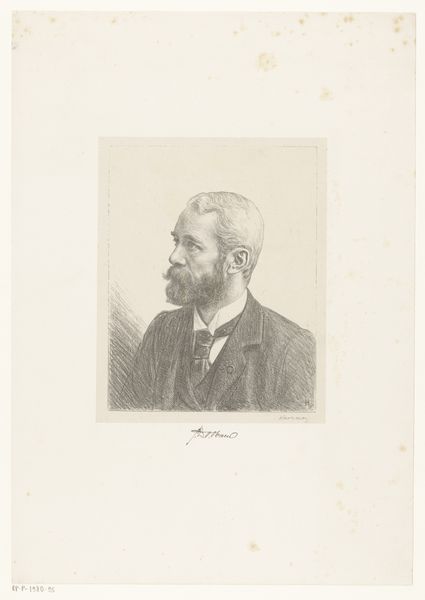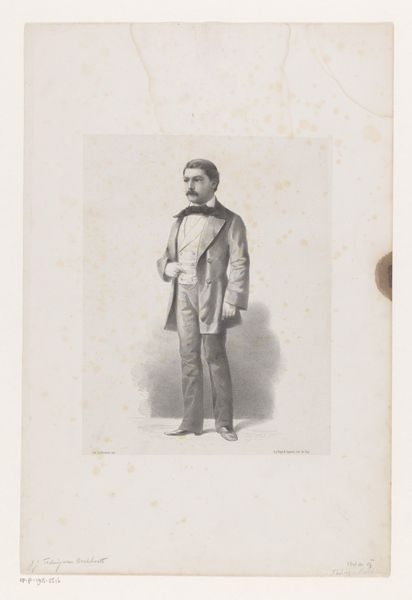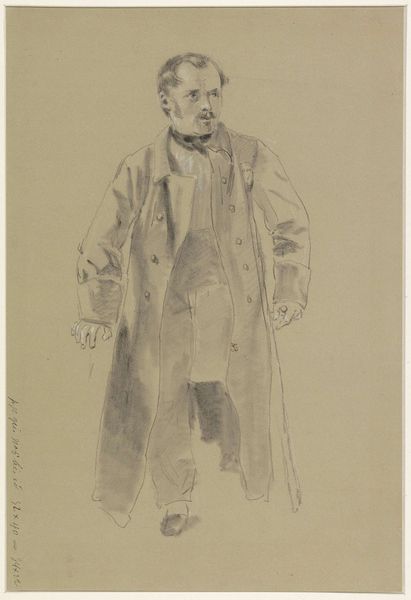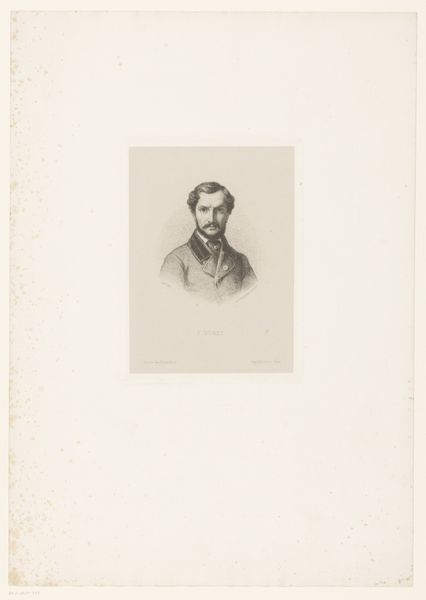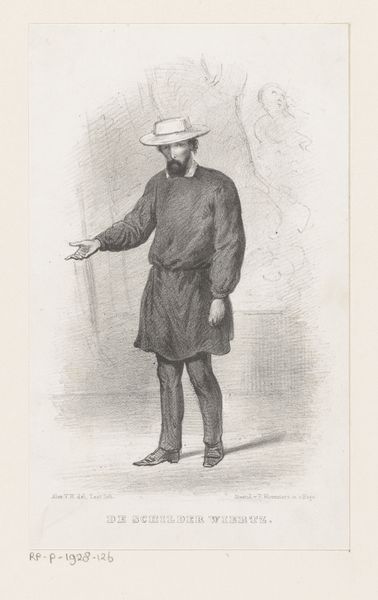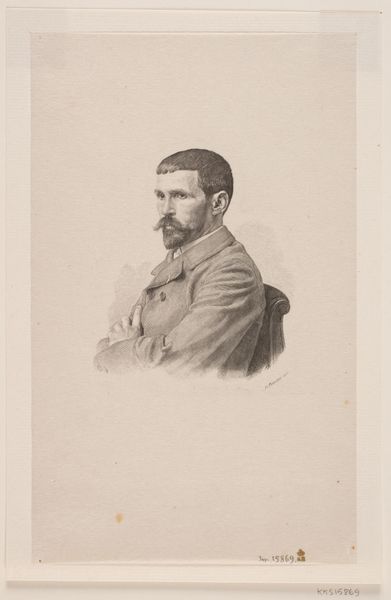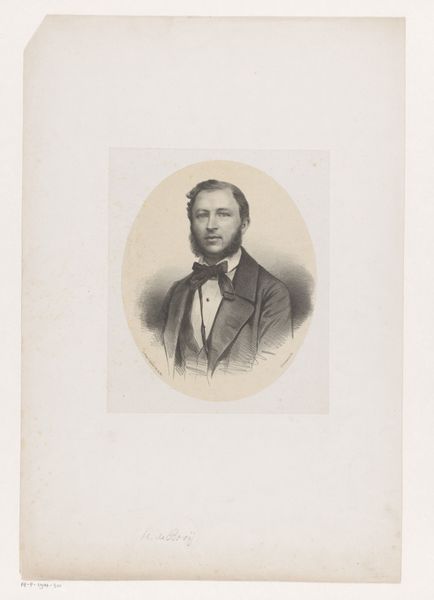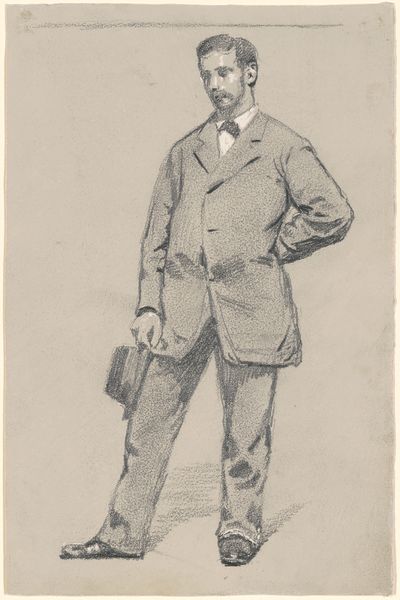
drawing, print, pen
#
portrait
#
pencil drawn
#
drawing
# print
#
pencil sketch
#
pencil drawing
#
pen
#
academic-art
#
realism
Dimensions: 350 mm (height) x 271 mm (width) (bladmaal)
Curator: What a curious piece. There’s something about the spareness of it, almost unfinished… like a thought catching its tail. Editor: That's an interesting take! We're looking at "Selvportræt af L. Frølich," a self-portrait executed in 1845. Frølich was a Danish artist, and this piece is a drawing, employing pen, pencil and printmaking techniques. Curator: Oh, a self-portrait! That explains the… intensity. He's looking right at us, or perhaps right *through* us. All that detail in the face, then these almost hasty strokes forming the clothing. What do you think he was trying to say? Editor: Well, portraits during this period were often about projecting a certain status. But the looseness and simplicity suggest a deliberate choice, perhaps aiming for authenticity over idealization. I find it incredibly intimate, despite the physical distance represented in his pose. He stands there fully clothed and yet appears to be so open. Curator: Intimacy... yes. But perhaps the status resides in the implied wealth allowing the luxury of contemplation and self-representation through art. The image is a print but made after his sketch so we can understand he wanted the wide audience, for which a print can allow. Editor: Do you get the sense he liked himself? The way he captures his gaze is honest, perhaps even a little challenging, but there’s a slight softening, almost an apology around the lips. Curator: Maybe he's not entirely comfortable, but resigned. Artists, particularly those in the academic circle Frølich occupied, were often trying to navigate the expectations of patrons and the art world, with their own personal vision. Editor: Interesting point! Almost like the visual equivalent of an artist's statement, justifying your choices, while laying yourself bare for examination by critics or gallery-goers. Curator: Exactly. In its historical context, "Selvportræt af L. Frølich" serves as both a personal reflection and a document of its era, an individual navigating his place in the artistic and social structures of 19th-century Denmark. Editor: It gives me goosebumps thinking of how he'd respond to all of us analyzing this quiet moment of looking at himself almost 200 years ago! A real connection beyond time.
Comments
No comments
Be the first to comment and join the conversation on the ultimate creative platform.

